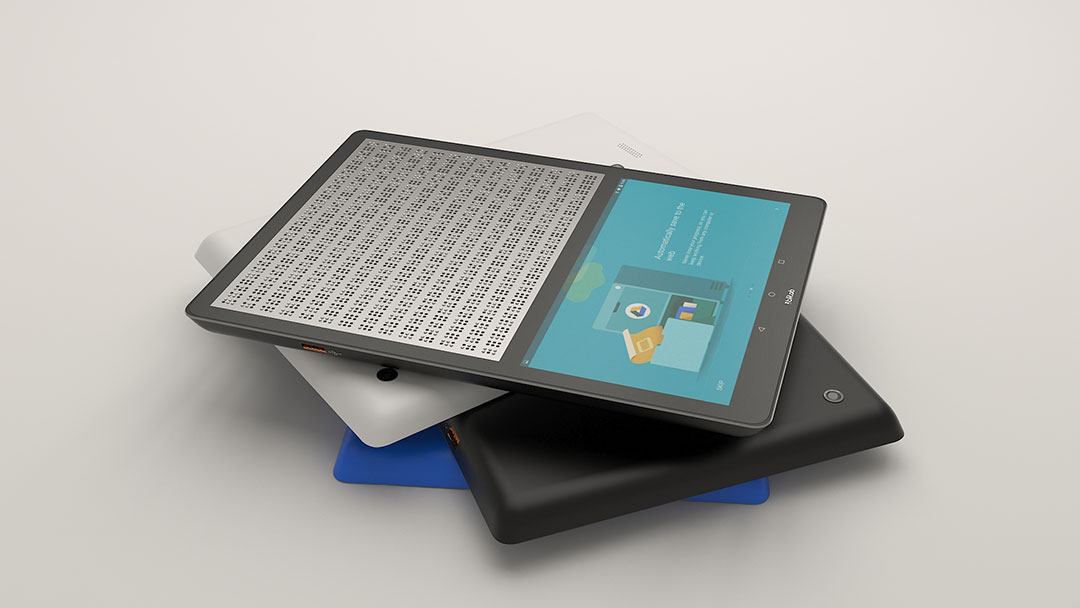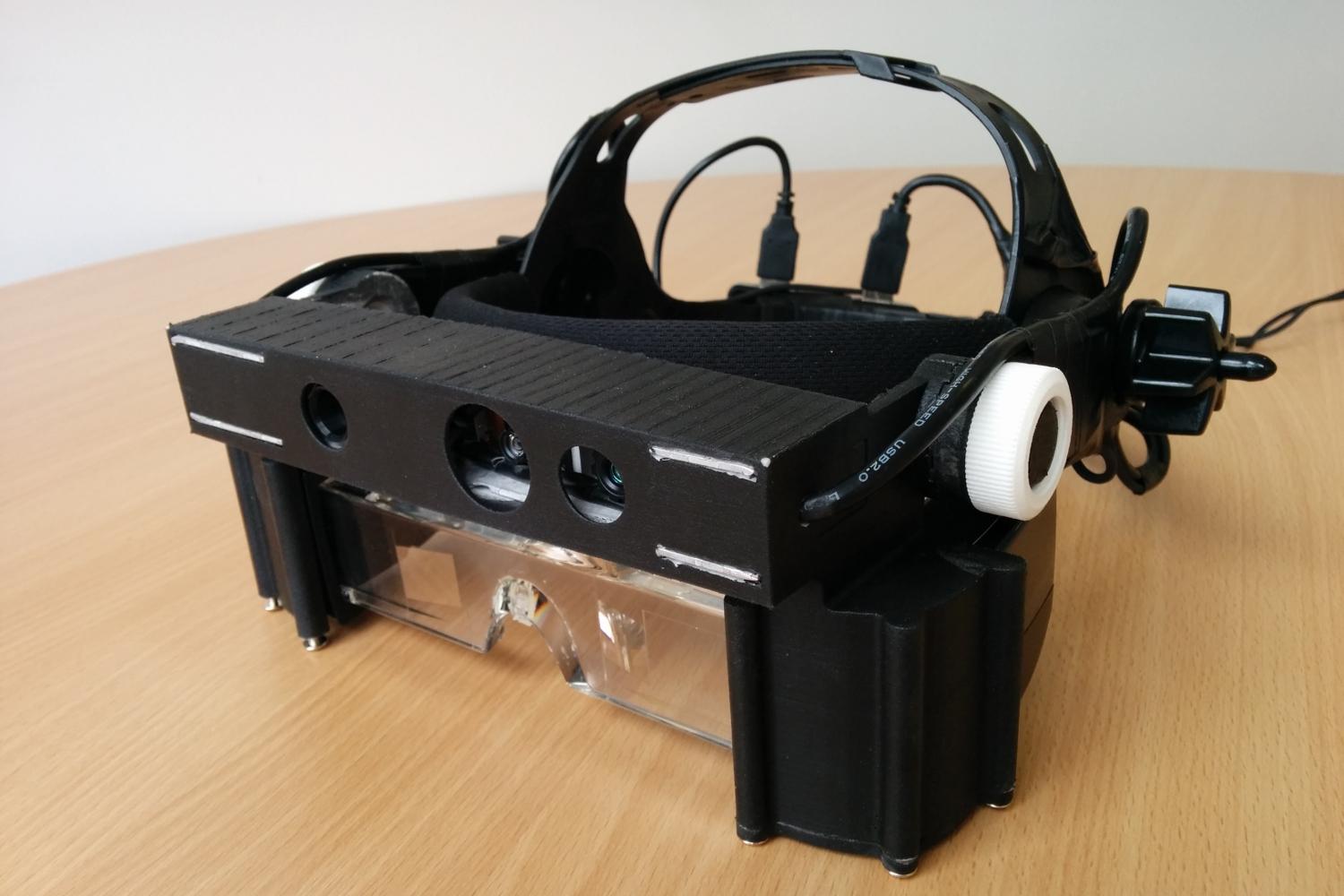Discover Innovative Devices Made for the Visually Impaired
The growth of cutting-edge devices for the aesthetically impaired stands for a significant innovation in access and self-reliance. Technologies such as clever glasses with AI abilities and mobile applications designed to provide acoustic descriptions are improving everyday experiences for users. Furthermore, wearable tools that utilize haptic feedback boost ecological understanding, while contemporary Braille developments offer brand-new means to involve with message. As these devices remain to progress, their influence on the lives of those with aesthetic impairments raises important questions regarding the future of inclusivity and autonomy in different aspects of life. What exists ahead in this technological landscape?
Smart Glasses for Navigation

Smart glasses developed for navigating are revolutionizing the means aesthetically impaired people engage with their atmosphere. These advanced tools use a combination of video camera innovation, expert system, and auditory feedback to give real-time details regarding surroundings. By using challenge detection systems, clever glasses can alert customers to possible hazards, allowing more secure flexibility in both unfamiliar and familiar settings.
The combination of GPS modern technology even more boosts navigating abilities, allowing customers to receive auditory instructions as they move. This hands-free strategy not only promotes freedom but additionally empowers visually impaired individuals to navigate urban landscapes with enhanced self-confidence. Additionally, lots of clever glasses are outfitted with attributes that recognize spots and street indicators, providing contextual information that boosts the user experience.
Additionally, the growth of these tools is constantly progressing, with companies functioning to boost the precision of things recognition and expand the series of navigational functions. As clever glasses come to be more inexpensive and available, they hold the prospective to substantially change day-to-day live for aesthetically damaged customers. Ultimately, these innovative tools represent an important action towards inclusivity, offering boosted wheelchair and a better feeling of autonomy for people navigating the globe around them.

Mobile Application for Daily Living
Just how can mobile applications improve the day-to-day lives of visually damaged individuals? Mobile apps are changing the way aesthetically damaged users navigate their settings, manage everyday tasks, and accessibility details. These applications offer important support through numerous performances, cultivating independence and improving high quality of life.
Numerous cutting-edge mobile applications are designed specifically for everyday living. Applications like Be My Eyes attach aesthetically damaged customers with sighted volunteers using video calls, enabling them to get real-time help with jobs such as reviewing labels or navigating unknown areas. Seeing AI, created by Microsoft, makes use of artificial intelligence to describe surroundings, read text, and identify items, efficiently transforming a mobile phone right into an effective device for daily aid.
Furthermore, navigation apps tailored for the visually impaired, such as Aira and BlindSquare, use audio-based instructions and environmental details, making it possible for users to traverse their surroundings safely and confidently. Beyond navigating and immediate assistance, mobile apps likewise support organization and job management, with attributes that aid individuals establish pointers, create to-do listings, and track consultations. In summary, mobile applications work as essential sources, equipping aesthetically impaired individuals to lead more independent and meeting lives.
Wearable Technologies for Support
Empowerment via innovation is increasingly noticeable in the realm of wearable tools developed to aid visually damaged people. These innovative devices incorporate flawlessly into day-to-day live, enhancing navigation and supplying important responses to users. As an example, clever glasses equipped with cams can check out and acknowledge faces message aloud, allowing individuals to connect more confidently in social and expert setups.
An additional remarkable development is making use of haptic comments systems in wearable gadgets. These systems make use of resonances or various other responsive signals to convey information about the user's atmosphere, such as challenges or modifications in surface, boosting flexibility and safety and security. Wearable technologies also include wristbands that link to smartphones, alerting users to notifications through subtle vibrations, therefore enhancing connectivity without reliance on visual cues.
As these technologies remain to evolve, they are not just boosting freedom for aesthetically damaged people however also fostering a greater feeling of incorporation in culture. By connecting the space in between difficulties faced in day-to-day living and the possibility for autonomy, wearable technologies act as essential devices in the mission for equal rights and empowerment for those with visual problems.
Sound Description Tools
Sound description devices play an essential role in boosting availability for visually damaged individuals, providing them with the capacity to engage with aesthetic media. Braille displays and notetakers. These devices use narrated descriptions of crucial visual aspects in movies, television programs, and live performances, making certain that users can totally comprehend the context and feelings conveyed with visuals
Sound description can be incorporated into different systems, consisting of streaming services, movie theater testings, and live theater. Several popular streaming solutions currently include audio description as an my company ease of access attribute, allowing customers to pick it easily. Along with conventional media, specialized apps likewise exist, providing audio descriptions for art exhibits, galleries, and other cultural occasions.
The effectiveness of audio summary rests on the skill of the storytellers, who need to communicate aesthetic details succinctly without diminishing the original sound. Developments in this area are likewise leading the way for more personalized experiences, where individuals can adjust the level of information and pacing according to their preferences.
Braille Innovations and Gadgets
Braille devices and innovations have substantially changed ortho k near me the means visually damaged people connect with text and info. Modern innovations have led to the advancement of flexible devices that boost proficiency and independence among customers.
Furthermore, mobile Braille notetakers integrate standard Braille input with modern-day capabilities, assisting in note-taking, organizing, and record editing on the go. Smart glasses for the visually impaired. These small gadgets usually feature text-to-speech abilities, bridging the space in between Braille and auditory details
Furthermore, innovative Braille printers have actually arised, permitting users to create Braille tags, papers, and instructional materials efficiently. This ease of access fosters greater involvement in academic and specialist settings, eventually promoting inclusivity.
Moreover, research study into wise Braille innovations remains to increase. Instruments that integrate man-made intelligence are being discovered to supply real-time navigation assistance and contextual information, enhancing the customer experience in varied setups. On the whole, these developments reflect a dedication to empowering aesthetically damaged people with modern technology, guaranteeing they can easily gain access to and involve with the world around them.

Conclusion
The development of innovative devices for the visually damaged substantially improves independence and quality of life. Smart glasses, mobile applications, wearable modern technologies, audio summary devices, and Braille innovations collectively encourage people by supplying vital navigation aid, ecological understanding, and improved analysis experiences. These innovations not only foster better addition but additionally advertise freedom in everyday activities, inevitably contributing to a more available and fair culture for aesthetically impaired people. Continued address growth in this field holds promise for additional enhancements.
As wise glasses become much more budget friendly and easily accessible, they hold the prospective to dramatically transform day-to-day life for visually damaged users. Mobile apps are changing the method visually damaged customers navigate their atmospheres, manage day-to-day tasks, and gain access to details. Apps like Be My Eyes link aesthetically damaged users with sighted volunteers through video clip telephone calls, allowing them to get real-time aid with jobs such as reading tags or navigating unfamiliar rooms.Additionally, navigation applications customized for the visually impaired, such as Aira and BlindSquare, provide audio-based instructions and ecological details, making it possible for customers to traverse their surroundings safely and confidently.The improvement of innovative tools for the aesthetically damaged considerably improves freedom and top quality of life.